Uncategorized
Unveiling the Meaning behind Joglo
Joglo is a symbolic, philosophical traditional Javanese home. The phrases tajug and loro, which imply two tajugs, are the origin of the name Joglo. Tajug is a pyramid- or square-shaped roof. The roof of the Joglo is shaped like a tajug, which means a sacred mountain. Because mountains are the highest point, Javanese people believe they are the homes of the gods.
Four Main Saka
The three most important things for Javanese people are their belief in the existence of God, known as Gusti Pangeran Jagad Raya, their belief in the existence of two universes (jagad alit and jagad gedhe), and their recognition of other powers outside of themselves.
The Javanese believe in entities of the supernatural because they think there are forces outside of ourselves that cannot be controlled. This spirit can be found everywhere since all species, even inanimate objects, contain energy.
The objective of life for Javanese people is to be in harmony with the cosmos. The phrases natas, nitis, and netes signify that we are created by God (natas), do God’s will (nitis), and return to God (netes).
Our form of harmonization with the spirits around us is done by giving ubo rampe (offering). Usually, it contains eggs, incense, tobacco, and flowers or other smells. Giving these offerings is meant to solicit approval from other spirits so they can coexist peacefully with humans without interfering with one another.
Javanese people place a high value on safety and peaceful coexistence with other species. Therefore, Javanese people would have a ritual before raising the pillars when they wanted to build a house.
Before the four main saka (pillars) were built, the upper wuwungan was decorated with red and white flags, rice, bananas and coconuts. The red and white flag was first employed by the Majapahit Kingdom, where red represents menstruation and white represents sperm, creating an overall sign of fertility. Offerings and prayers are plentiful throughout this ritual.
The Concept of Manunggaling Kawula Gusti
In Javanese philosophy, the home and its natural environment are referred to as the gedhe universe (macrocosm), whereas the human ego is referred to as the little universe (microcosm). The concept of Manunggaling Kawula Gusti is represented by the saka guru structure, which urges us to gaze up. There is a womb symbol in intercropping, which represents where we originate from. The womb emblem serves as a reminder of our origins.
Home Materials
Jackfruit, teak, and glugu wood (an original wood from Wonosobo, Kebumen and Pangandaran beach Cilacap) are often used as the building materials. Since honesty is regarded as the most important virtue in Javanese culture, when everything is put together, it will create a truly innocent minangka, which implies people must be honest.
Joglo homes are constructed from three distinct types of wood. The living room is made of jackfruit, the family room and bedroom are made of teak, and the kitchen is made of glugu. However, the financial situation of the homeowner will determine this. Typically, the complete home is constructed out of teak wood when economic conditions are favourable. Additionally, some people blend glugu wood with jackfruit since it is less expensive than teak.
Roof Shape
The five fundamental roof types used on Javanese homes are the Panggang Pe, Tajug, Kampung, Limasan, and Joglo. The Panggang Pe, which is the most basic design, is exclusively utilized for farmers’ rest areas in rice fields. Tajug, on the other hand, is solely employed in the construction of mosques.
The construction of the roof frame, the type of wood used, and the thickness of the wood used are the three most fundamental distinctions between Kampung, Limasan, and Joglo roofs. Each type of roof form has its own ornament. In contrast to the pyramid, the Joglo roof’s design climbs upward, giving it the appearance of a mountain. There are several varieties of Limasan roofs, including those from Jogja/Solo, Semarangan, East Java, Bali, Kudus, and Madura.
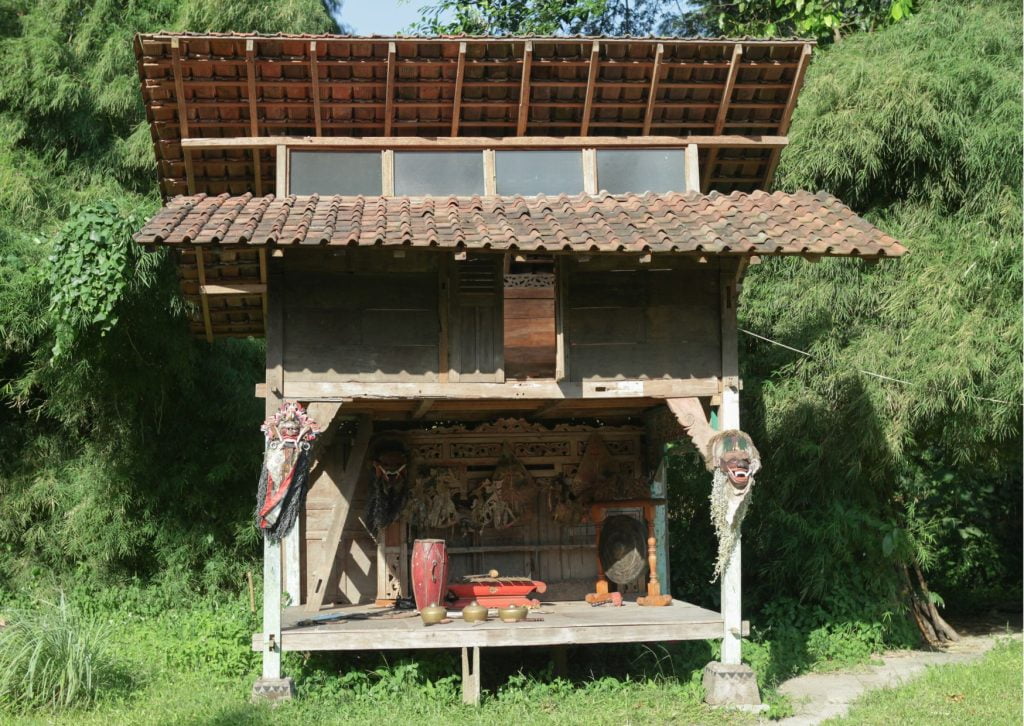
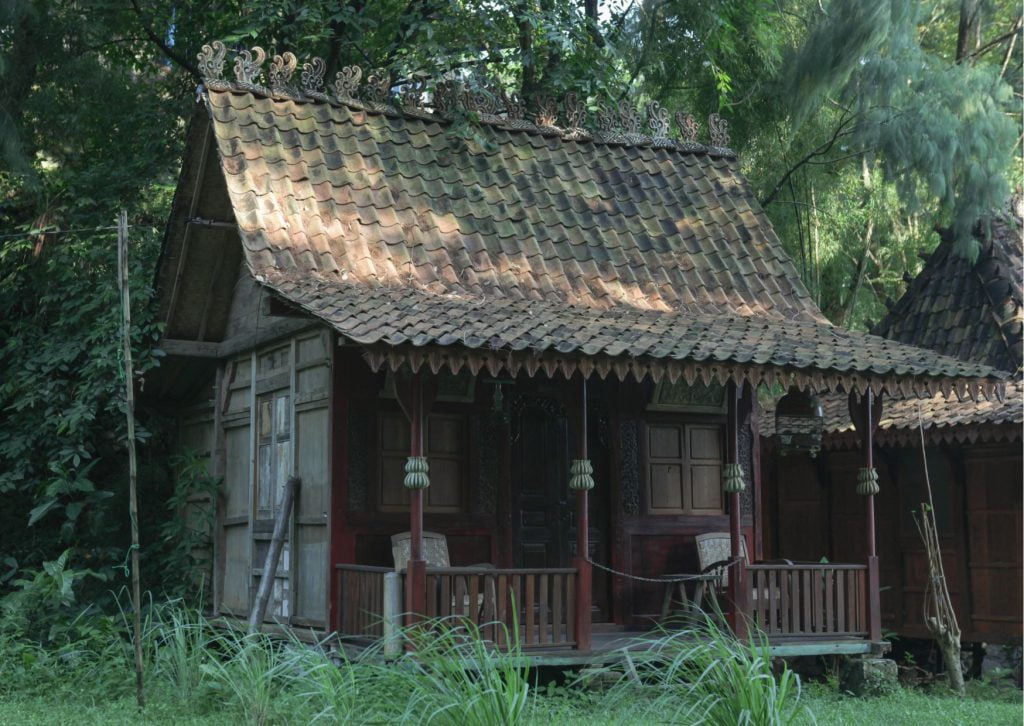
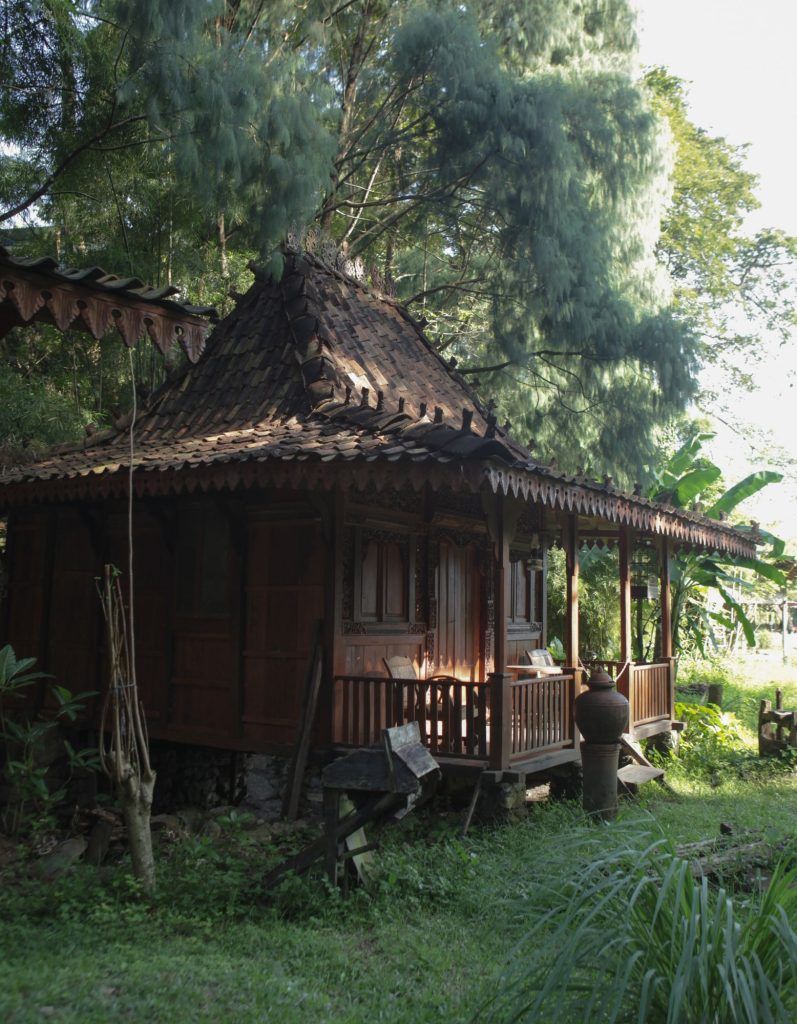
The shape of the roof indicates a hierarchy. The shape of the roof determines the social and economic status of the homeowner. This can be seen from the shape of the intercropping on the roof of the Joglo house, which is referred to as Tumpang Sari. A person’s socioeconomic strata rises with the density of buildings, height of homes, and number of structures. Each carving in the Tumpang Sari arrangement has a meaning. The maximum arrangement of Tumpang Sari on a Javanese house roof is nine arrangements. The higher the roof, the more captivating it will be.
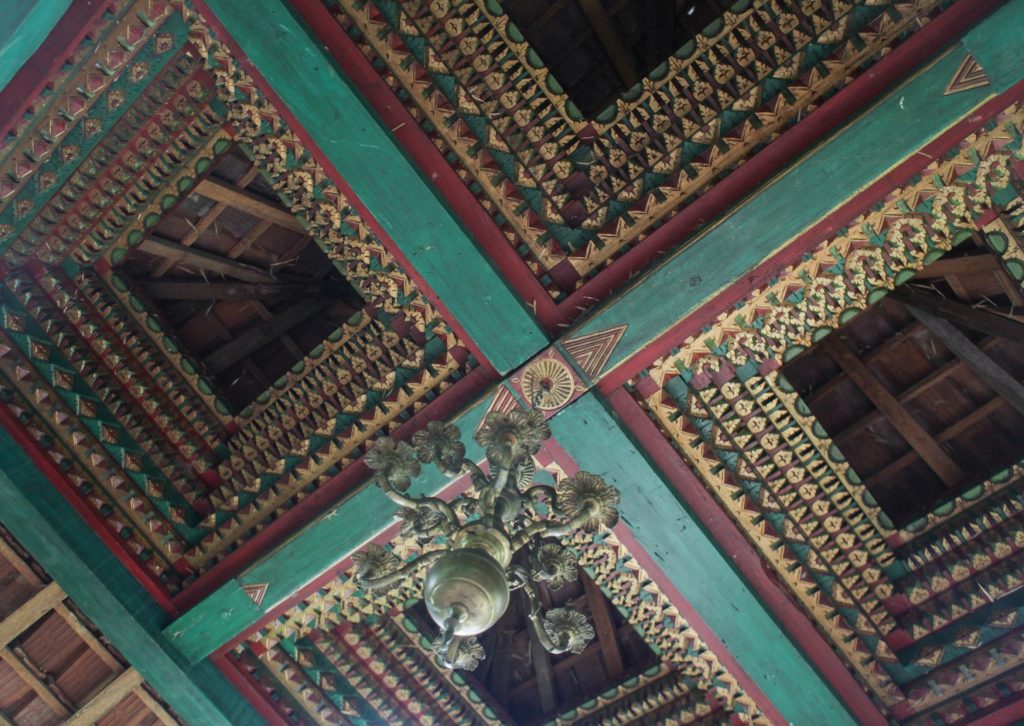
The roof decoration of Javanese houses, called wuwungan, also differs from each region. Jogja and Solo use the dragon or gunungan symbol and write the year the house was founded, while other areas do not mention the year. However, on average, other areas choose ferns/suplir plants for wuwungan. These types of vines symbolize growth and prosperity.
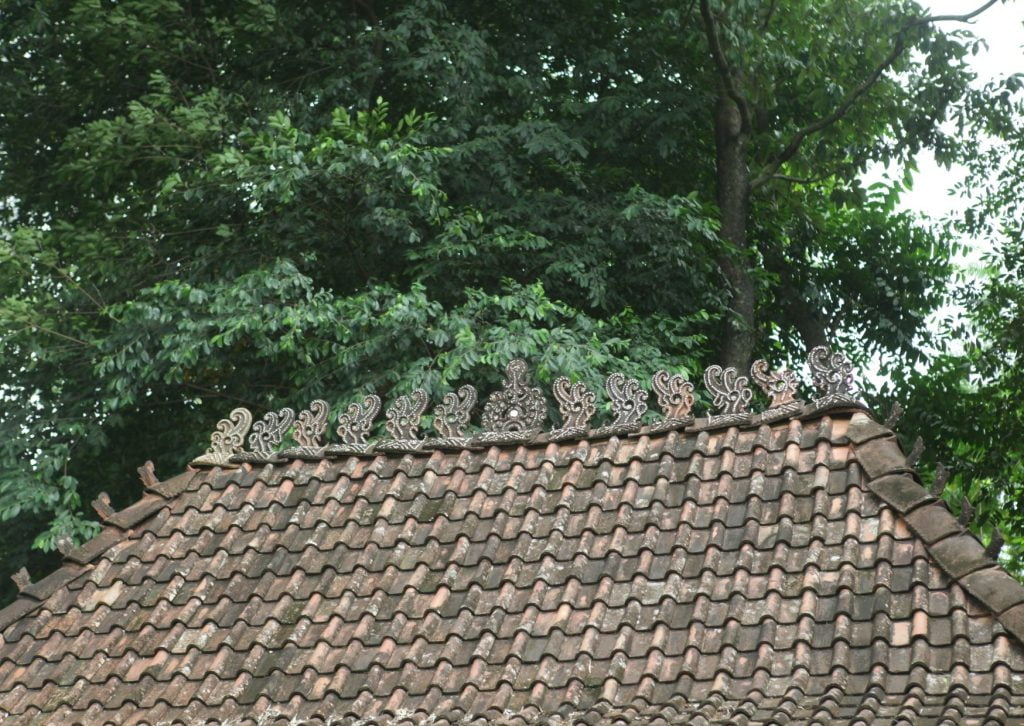
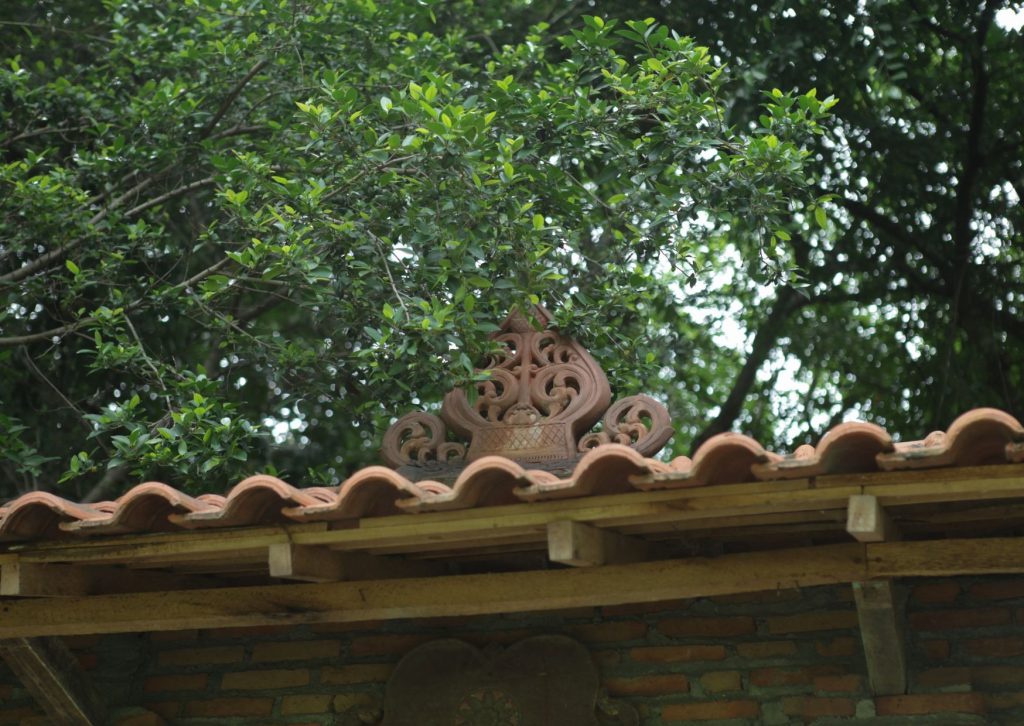
Layout
The inhabitants of Yogyakarta have strong beliefs that led to the notion of the link between the South Sea (lower axis), Yogyakarta (middle axis), and Mount Merapi (upper axis), which gave rise to Yogyakarta layout standards for building dwellings. Joglo Keraton faces Mount Merapi in the north, which is thought to be the source of all natural power. Meanwhile, the people’s Joglo is built facing south towards the South Sea. This axis philosophy gives the meaning of balance.
However, from a scientific perspective, the layout of Javanese home building depends on the position of the mountain in the island of Java, which is always in the center. Due to the fact that the wind shifts from land to sea at night, the home should always be built facing the opposite of the mountain. This location choice is considered healthier and in harmony with nature.
In contrast to Semarang, where houses should face north since Mount Merapi is in the north, Jogja houses face south because it is the direction of Mount Merapi. However, the layout of the house is not always north and south. Farmers tend to choose east and west layouts because they need the sunlight to dry the rice.
Since water is the most crucial element, choosing the location of the well comes first when building a Javanese home. Wells can be found both indoors and outdoors, although they are often outside. If it’s inside, then it’s usually in the kitchen area.
There are a number of natural ways to locate spring water, for example utilizing an upside-down betel and observing the areas with the highest steam, uses dozhingrods as well. The well must be finished first when constructing a Javanese home.
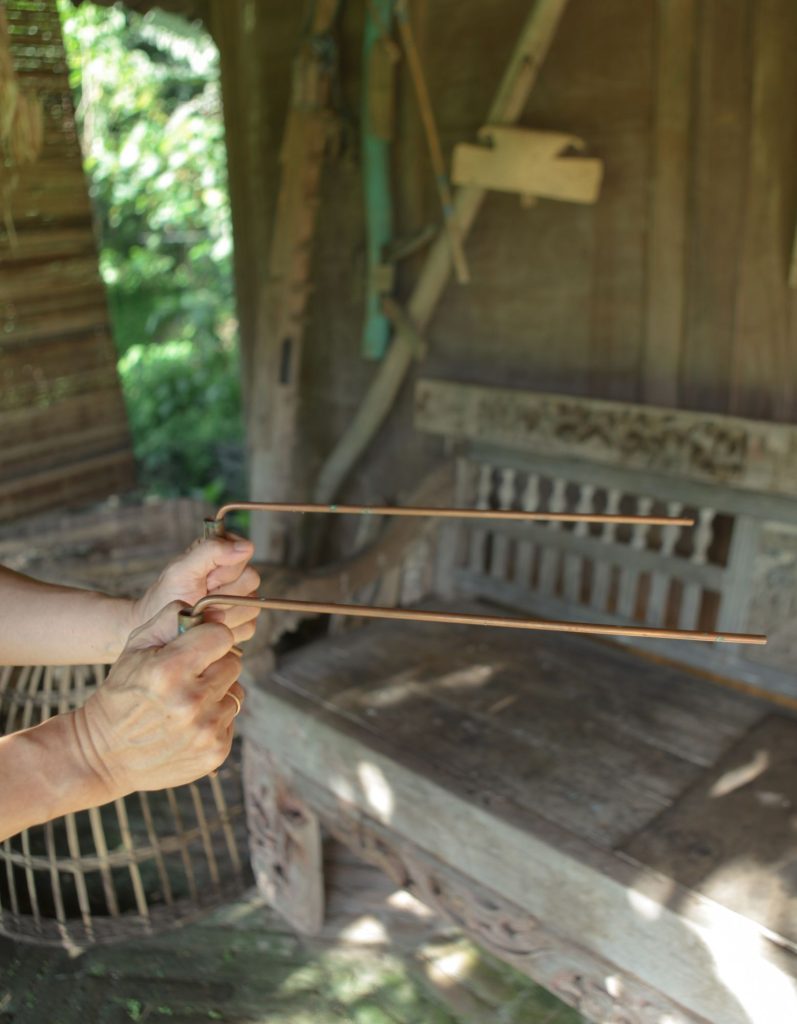
To minimize road noise, a Javanese home’s front yard should preferably be 10 to 20 meters away from the front fence. It is typical for two mango trees to serve as a gate in the front yard of a Javanese home. In Javanese, mango (monggo) signifies please. The Keraton‘s twin banyan trees, meanwhile, symbolize protection.
The structure of a Javanese house consists of several parts. Each part has its own function, including:
Pendhapa
Pendhapa is a separate building which is usually shaped like a Joglo. This building is located at the very front after the kuncung (vehicle stopping place). The function of the pendhapa is to receive guests, it can also hold events or meetings. Javanese people do not like to show their activities publicly. For this reason, pendhapa is used to welcoming guests.
Quoting Satono Kartodirjo, the pendhapa signifies the principles of order, harmony, balance, and stability in the cosmos. The pendhapa is a place used for various meetings by people from different backgrounds. Many activities can take place in the pendhapa, so guests don’t need to enter the main house unless permitted. This rule falls under non-physical boundaries, where only specific individuals are allowed to enter the main residence.
The pendhapa can serve as a place for self-control. The pendhapa can be interpreted as an open-air Joglo, so Joglo-style gazebos are considered part of the pendhapa. This structure is used for meditation and is typically placed in a corner of the house to provide a comfortable and peaceful space for solitude.
As an open public area (without partitions), pendhapa depicts a friendly and openness of Javanese society. In the pendhapa, you will typically find the saka guru, saka pengerek, and tumpang sari.
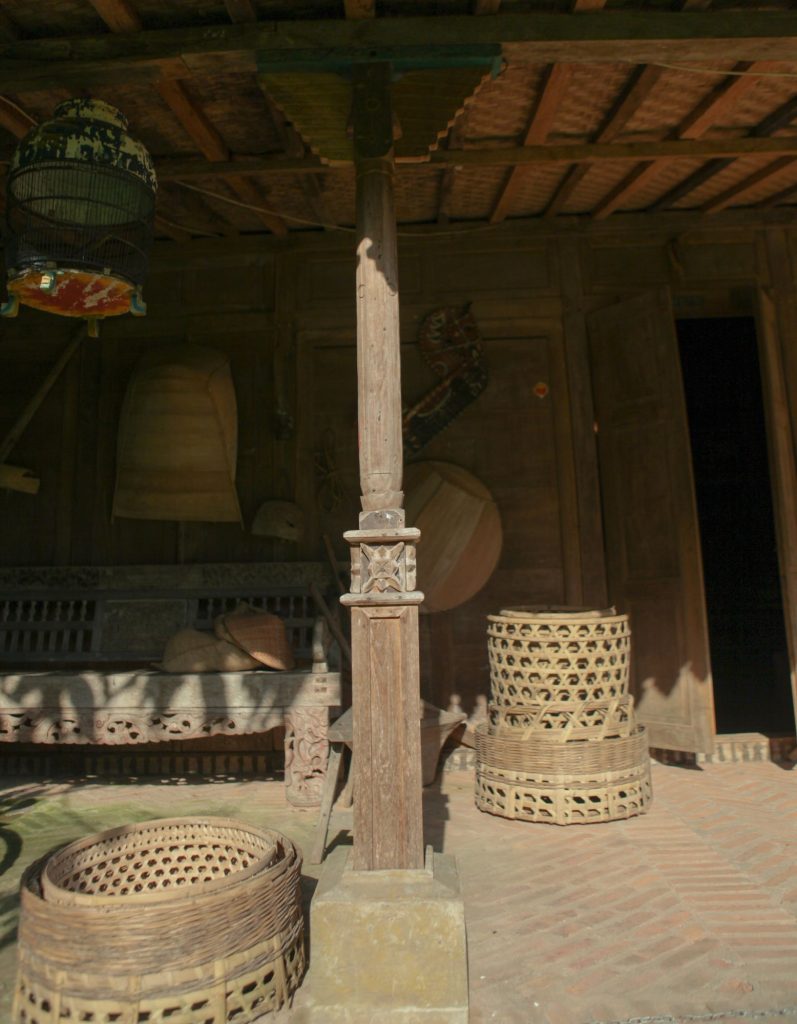
For those who don’t have a pendhapa, they can extend the roof of the main house (dalem) to create a terrace. There is a fish pond surrounding the pendhapa, which serves to keep it cooler.
Pringgitan
Pringgitan comes from the word ringgit which means wayang (puppet) in Basa Ngoko (informal Javanese language). Pringgitan is the part of the house located behind the pendhapa, its function is as a link between the pendhapa and the dalem. Between pringgitan and pendhapa it is bordered by seketsel, while from inside it is bordered by gebyok. Pringgitan has the shape of a village roof or limasan.
Pringgitan is a semi-open structure that can be used to receive honored guests. Pringgitan can also be served as a venue for wayang kulit (shadow puppets) and gamelan (a traditional Javanese musical instruments) performances.
Dalem
Dalem is the main enclosed building that functions as a family room, making it a private space. It typically uses gebyok or brick walls. Inside, there is a large room used as the family room. This space is not only used by the immediate family but also for receiving close guests, such as relatives.
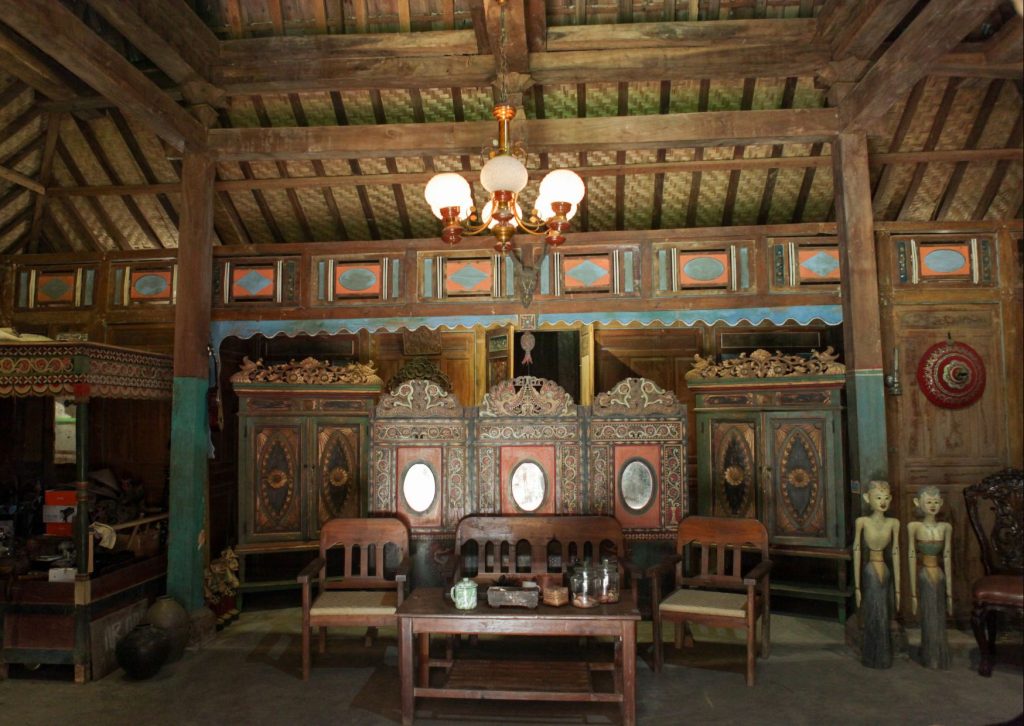
Dalem can also be used to greet female guests when husbands are chatting in the pendhapa. The conversation area needs to be kept apart since Javanese women don’t engage in men’s affairs.
At the entrance to the palace, there are windows and doors that are always symmetrical, symbolizing balance. However, the size of the window depends on where the house is built. In European influence building, the window and door will match in size creating three twin doors. The Solo and Jogja Palaces took up this style.
The northern coastal section only has one door and two symmetrical windows on both sides. Windows can be bars or completely blank like the Chinese influence. There are also sling windows where the left and right doors and windows join together, which are typically done when construction funds are minimal. However, with sufficient funds, it’s common to separate the door from the windows. In a Javanese house, the central door is the focal point.
On the inside door, there is a sampar banyu—a wooden stick at the bottom of the door—which functions to prevent water from entering the house. With the banyu pestilence, a person must lower their head when they want to raise their legs.
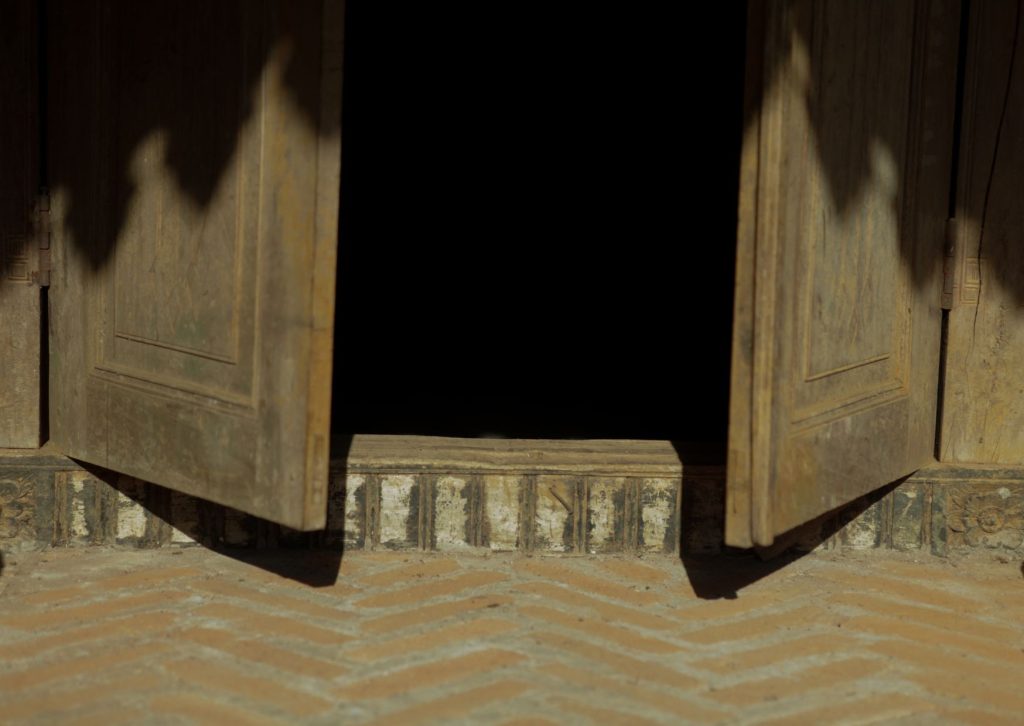
The roofs of Javanese houses are low so the doors tend to be short, so inevitably people have to lower their heads to avoid bumping them. Bowing your head when entering a house is also a form of respect for any entities in it, both seen and unseen.
Senthong
Senthong is a room located at the rear of the dalem, typically consisting of three rooms—west, center, and east—separated by partitions called patangaring.
West senthong is used as a place to store rice and agricultural products, while east senthong is used as a place to store farming equipment, weapons and valuables.
The middle senthong, which can also be called krobongan or petanen or pasren, is the most sacred room in a Javanese house because it is used for meditation or communication with God. Central Senthong is also a place of worship for Dewi Sri (the goddess of rice) who is a symbol of prosperity and well-being.
The middle senthong can function as a bridal bed because it is a union between the God Kamajaya and the Goddess Kamaratih. The Loro Blonyo statue is always placed in front of the central senthong as a symbol of harmony. There are also those who consider the couple in this statue to be the embodiment of Dewi Sri and Raden Sadhana.
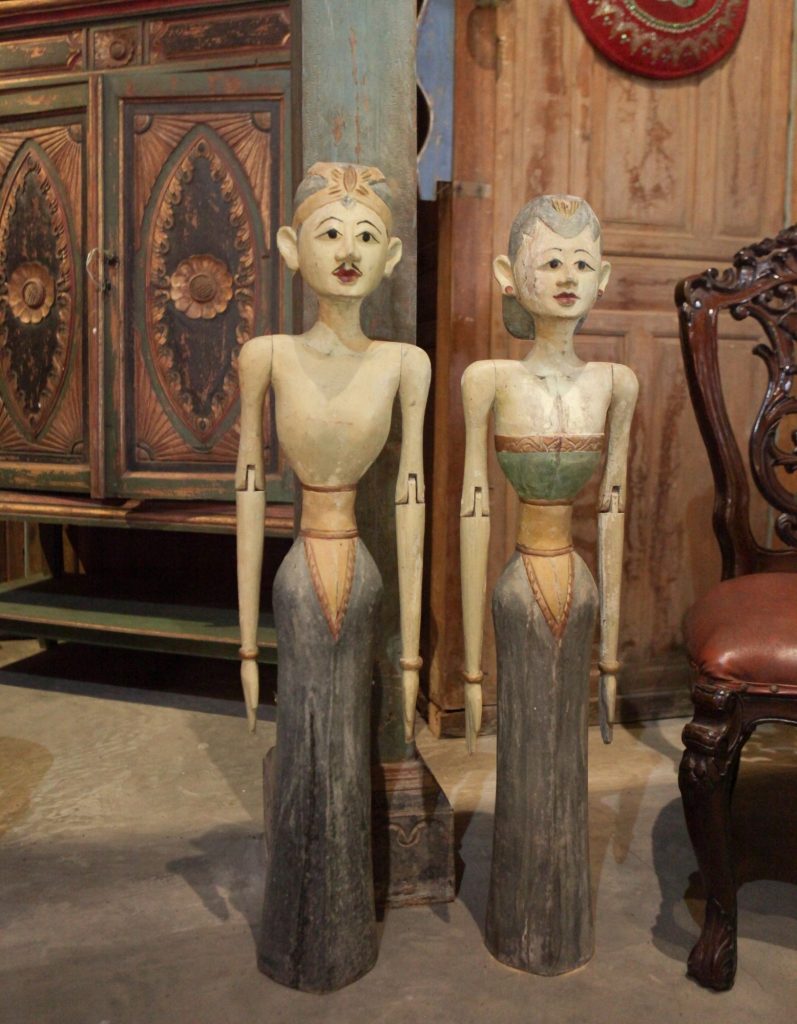
In the middle of these two statues, a 4×4 box decoration is placed which is generally five or seven levels high. This decoration is called a botekan cupboard. The levels in the botekan cupboard are not always five or seven, but always an odd number. This is because Javanese people like odd numbers.
For Javanese people, life is not ganep (complete), so we live to make it complete or perfect. Odd numbers are favored because it is from the odd that we can achieve ganep (completeness).
Loro blonyo is a symbol of harmony and perfection in the household. Loro Blonyo wears a wedding dress because the couple is reunited and united by the presence of the Creator. During the wedding ceremony, ubo rampe is presented which is a representation of God’s presence. Meanwhile, Botekan is a representation of the temple.
Gandhok
Gandhok is located on the right and left side of dalem. Gandhok usually takes the form of a village house with a length equal to the width of the interior and the building is relatively smaller.
The function of a gandhok is to store raw materials, harvest yields, and other items as logistic reserves. Gandhok can be divided by partitions to create several compartments used as bedrooms for grown-up children and overnight guests. The arrangement of the rooms is divided into two, with the women’s room on the left and the men’s on the right.
Gadri
Gadri is a dining room located behind Senthong and next to Pawon (kitchen). However, not everyone has gadri. If funds and space are limited, the dining room is placed in a gandhok.
Pawon
Pawon (kitchen) is located behind senthong. Pawon is separate and open because it’s used for cooking spices and, therefore, needs to be separated from the main house by a partition.
The size of the pawon is large because Javanese people usually cook using wood, so they need a place to store the wood. Most people only put some of the wood they want to use inside the pawon, and put the rest outside. The wood to be used is placed near the fire pit to dry.
The rewang tradition where neighbors will come to help prepare dishes for the event also means that the pawon is made large enough to accommodate people who want to assist.
Pekiwan
Pekiwan is located at the very back. The word pekiwan means it is located far behind. Kiwa can also be interpreted as left, meaning a hidden place.
For Javanese people, bathing and defecating are very private activities so this part is placed at the very back of the house. However, there are also houses that have a pekiwan in front (pekiwan ngarep) to provide a toilet for guests.
Pagedhogan/ Gedhogan
The pagedhongan is situated beyond the yard’s entrance (regol) on the left front. It serves only as a horse parking area. When horses are to be employed, they will be prepared in the pagedhongan. The horse will also be tied in the pagedhongan when visitors arrive.
Regol
Regol is the entrance gate to a Javanese house, typically located at the very front. Regol typically features three doors: two small doors on either side and one huge entrance in the center. The little entrance is utilized for individuals entering and exiting, and the middle section serves as the entryway for incoming vehicles. The placement of these three doors means that if you can open the third eye, namely the middle door, your understanding of the universe will be increasingly open.
The Ornaments
Joglo generally has almost no color. However, color dominance varies depending on cultural distinctions throughout each place. Chinese culture had a strong effect on the northern shore, as shown by the similarity of Joglo buildings in Cirebon, Pekalongan, Semarang, Surabaya, and other northern locations to the colors red, yellow, and green.
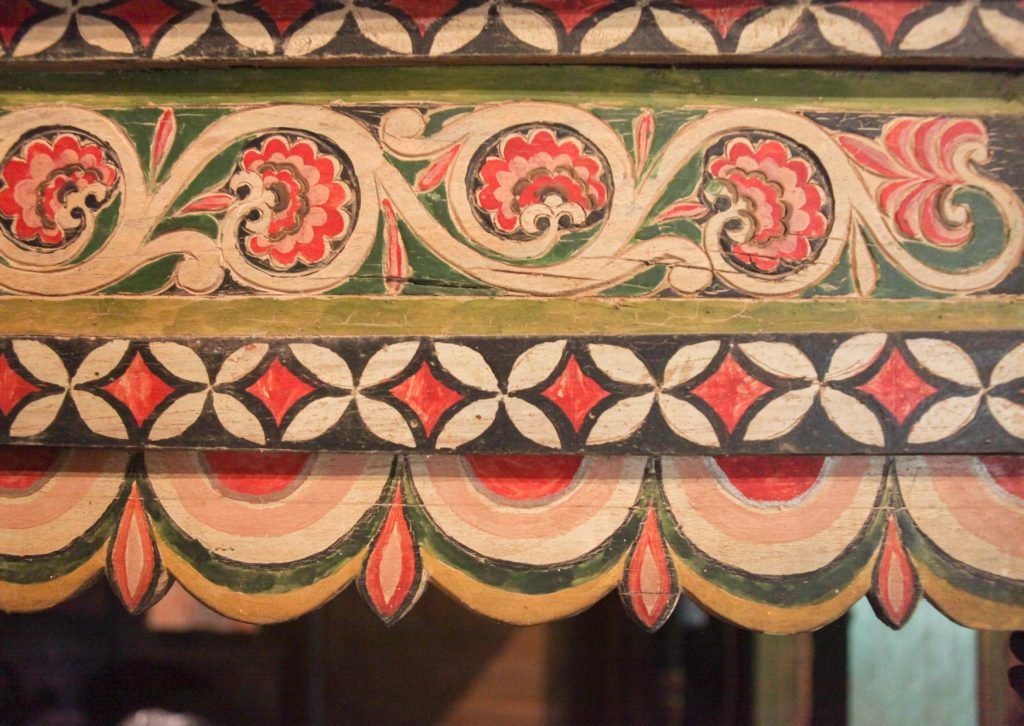
In contrast, the southern coast, which includes the areas of Cilacap, Jogja, and Solo, is marked by colors of green, cream, yellow, or gold as a the influence of Kraton. Green is associated with the Queen of the South Sea and is believed to be a sign of wealth. As in Pemalang and Wonosobo, the central part is not dominated by any specific culture and remains plain.
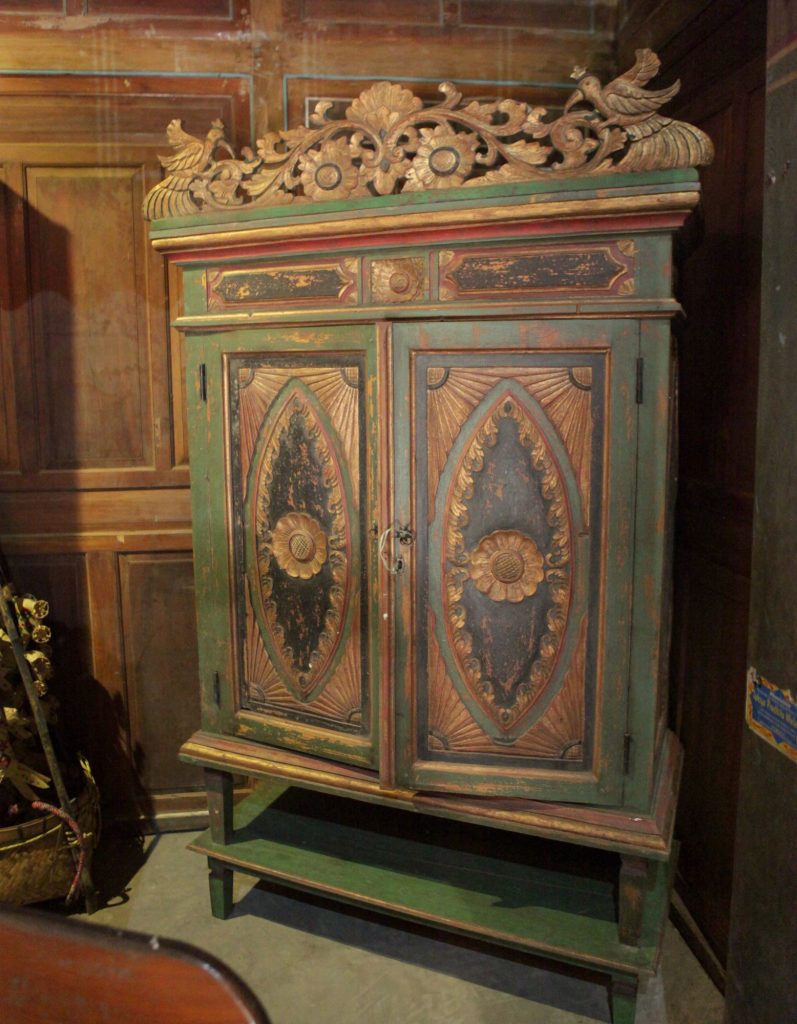
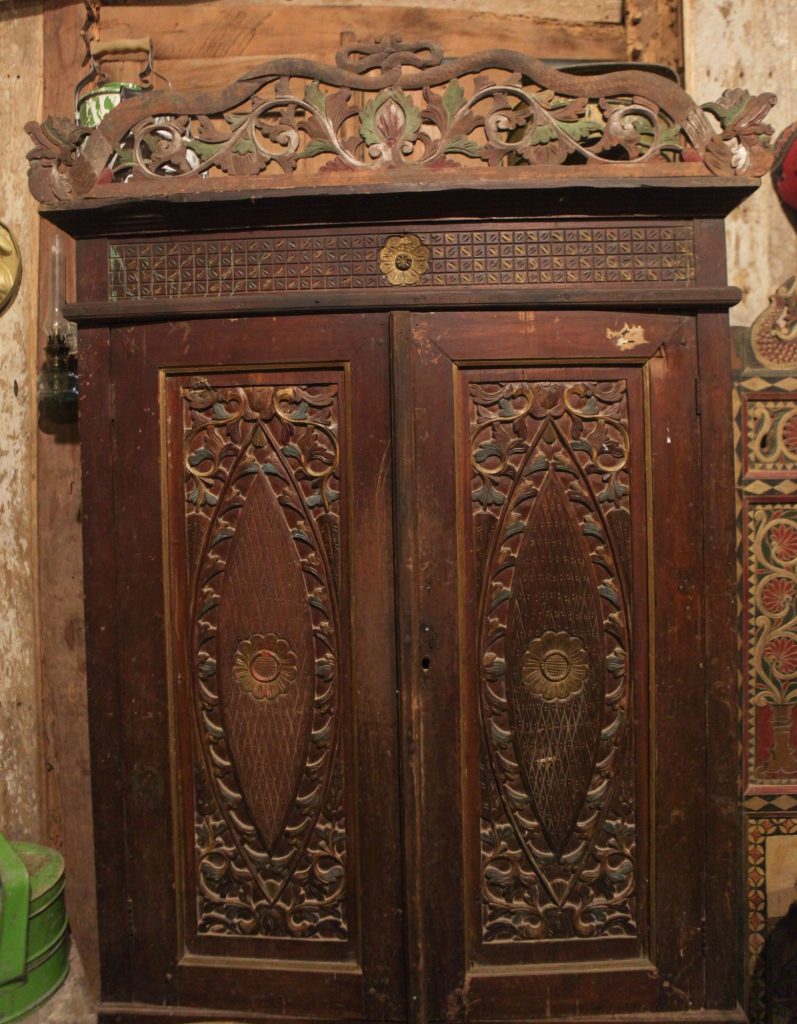
As the representations of harmony in nature, flora and wildlife are frequently included in Javanese home décor. The most commonly used adornment is sluluran plant (vines), which symbolizes growth or riches. Fauna typically features animals that serve as safeguards, symbols of good fortune, reminders, and representations of strength.
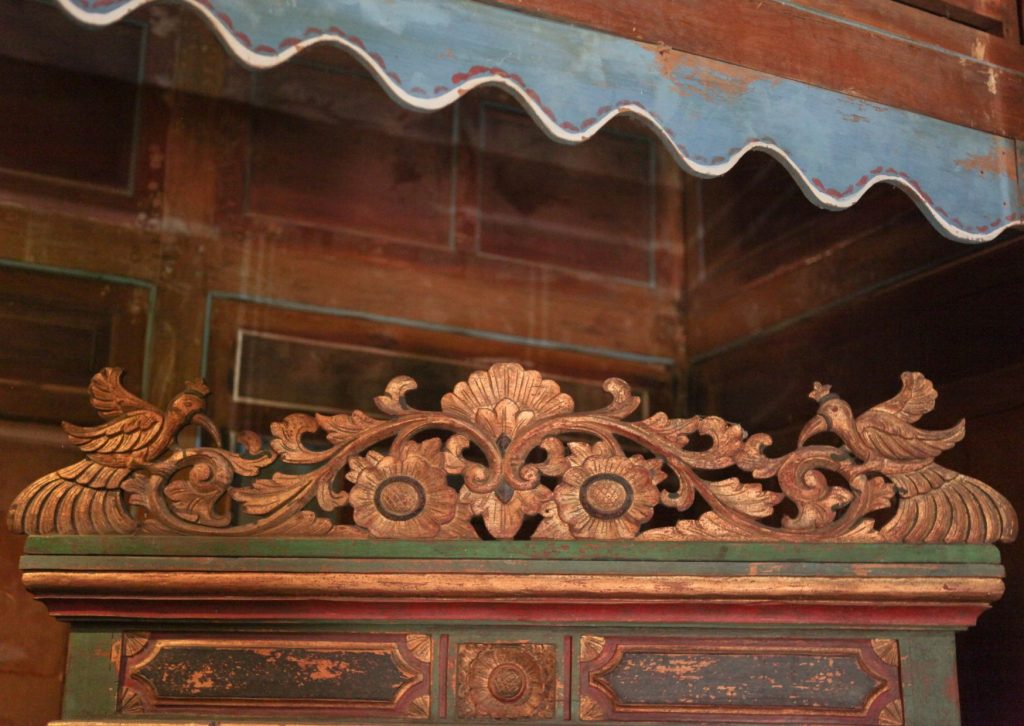
Carvings on houses in Central Java are categorized into three regions: the north (coastal), central, and south. Carving depth in the northern coastal area tends to be thin, except in Kudus and Jepara. Meanwhile, in the central and southern regions, the carving depth is moderate.

Central Java decoration is identical to Javanese dragon and buto (giant or big demon) motifs. Meanwhile, for Jogja Solo, the most widely used motif is kawung which means the beginning of life. Jogja Solo is also synonymous with various motifs of the sun, paper flowers, jasmine and Javanese penjak birds.
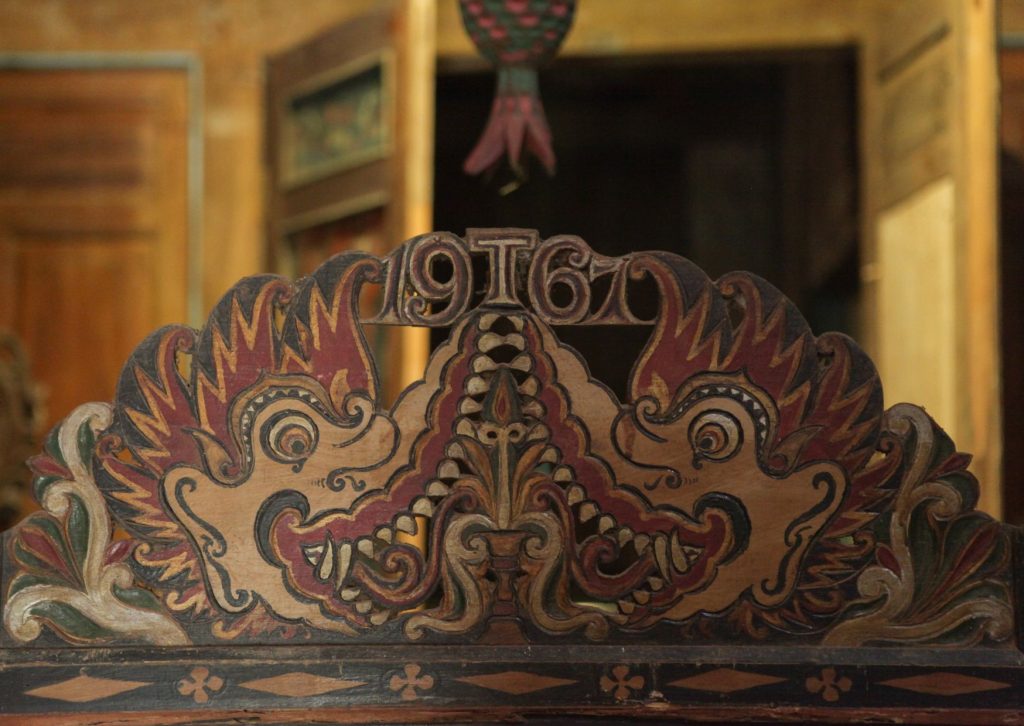
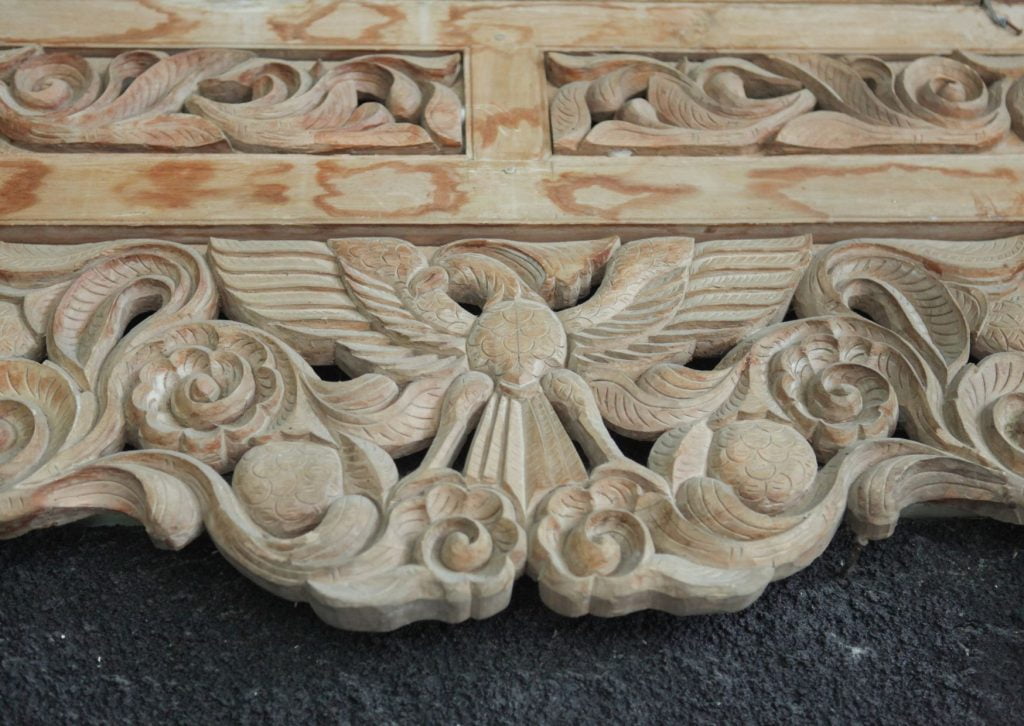
In areas influenced by the Keraton (royal palace), they often feature the Sinar Mataraman motif, which is a distinctive motif of the Keraton. Sinar Mataraman consists of three symbols combined into one form. These symbols include the sun (life), a diamond (wealth), and a vagina (fertility).
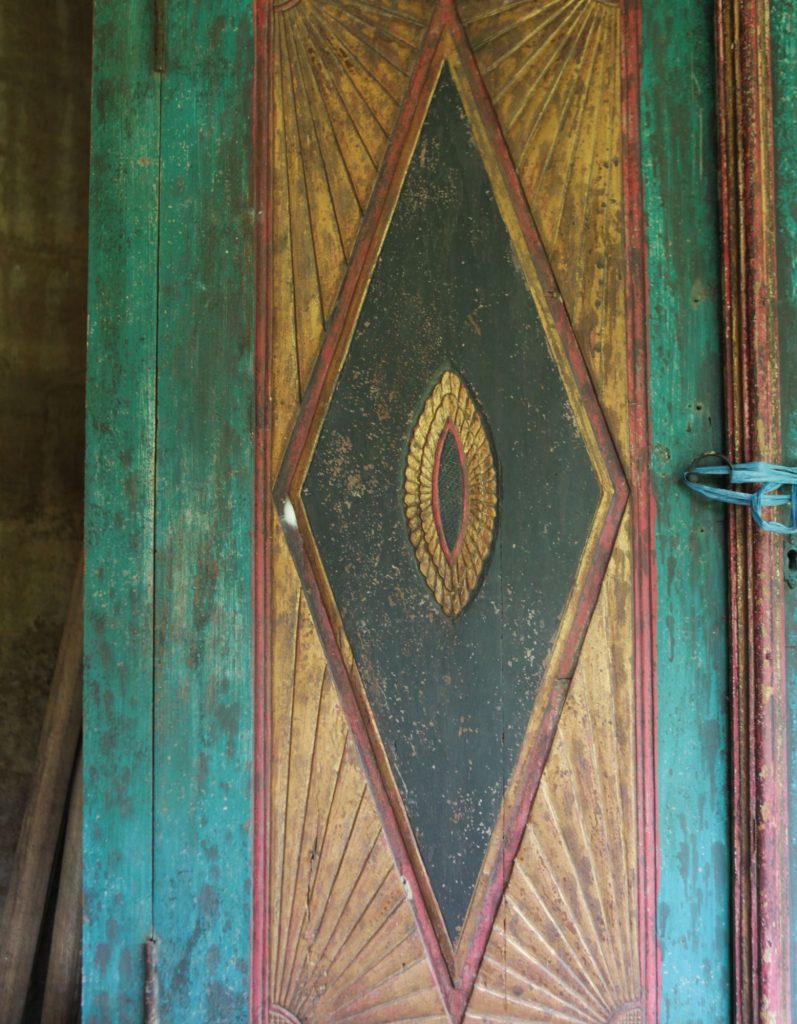
Surya Majapahit is a symbol that is commonly found at heritage sites from the Majapahit kingdom. This symbol is also often used as decoration in Javanese homes. Surya Majapahit is in the shape of a sun with eight corners, representing the cardinal directions, yoga positions, and Hindu gods.
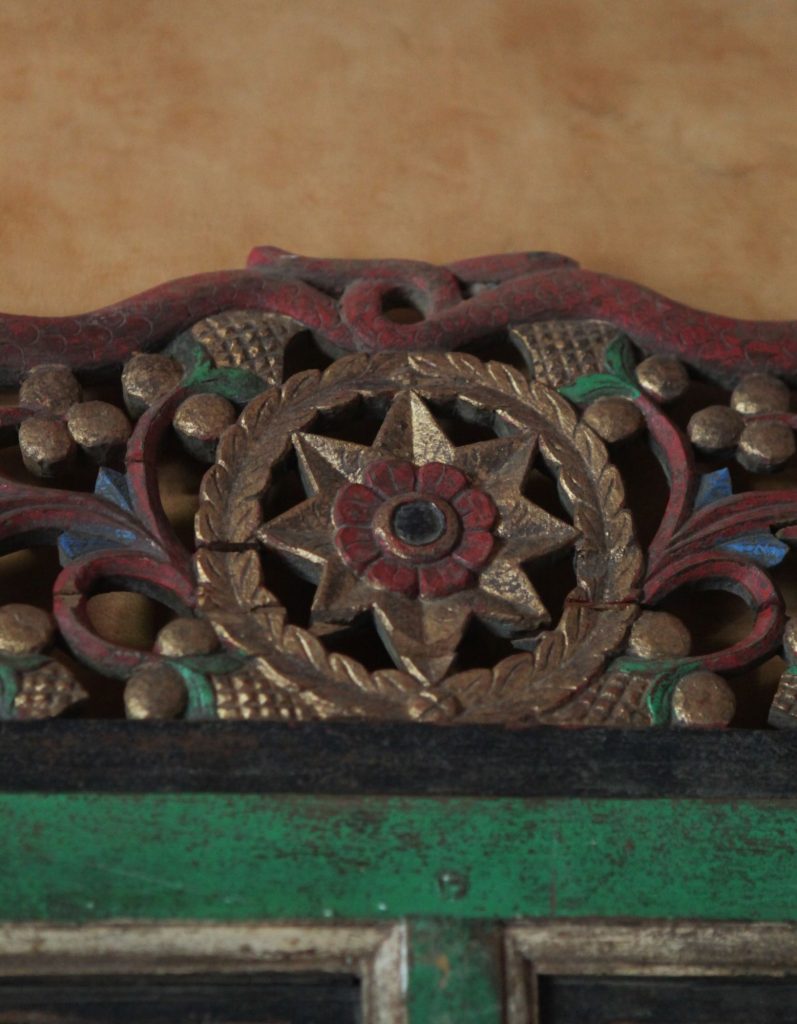
If the motif and symbols are the same, the difference in the region of origin can be observed through the shape, depth of carving, and color. For instance, the motif of creeping plants can be found in all regions, but the depth of the carving and color influence the origin of the house.
Jepara and Madura are known for their deep carvings, the colors of the decorative ornaments will also be more colorful. This is different from Jogja, the carvings will be thinner and the colors will be dominated by green, cream and yellow/gold.
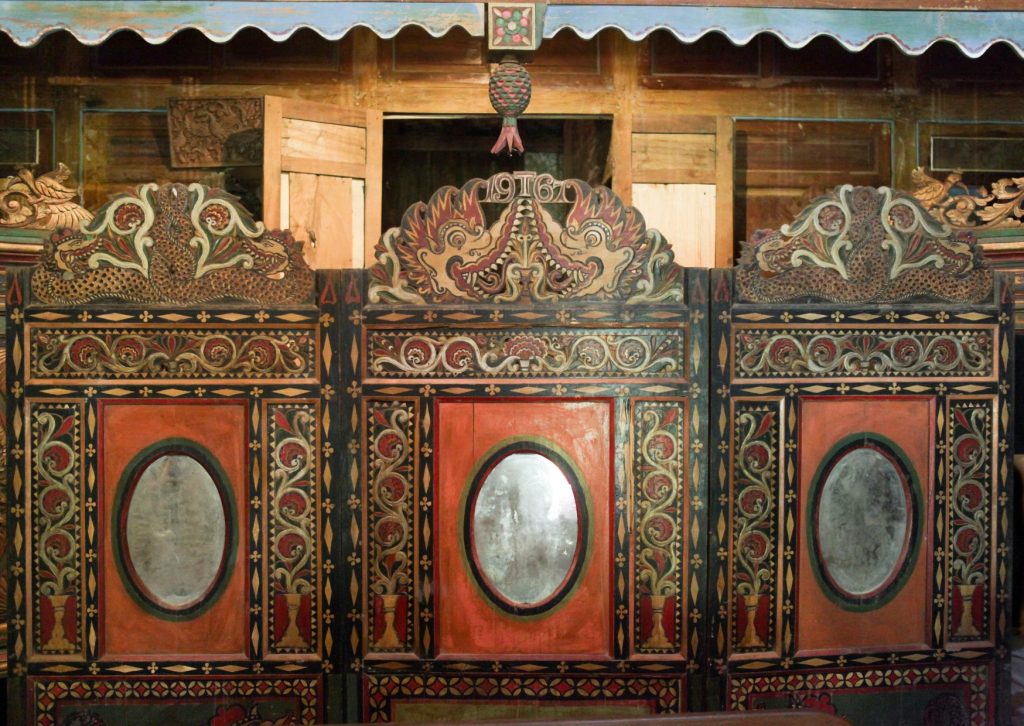
Tolak Bala
Tolak Bala is a decorative element of a house that functions to ward off negative energies from entering the home. In Java, there are several ornamental motifs that serve as tolak bala, including:
- Gabangan
Placed on the left or right side of the door.
- Padi hitam (Black Rice)
Placed at the top center of the entrance. When there is negative energy or people want to do evil to the owner of the house, the rice will turn black and fall off.
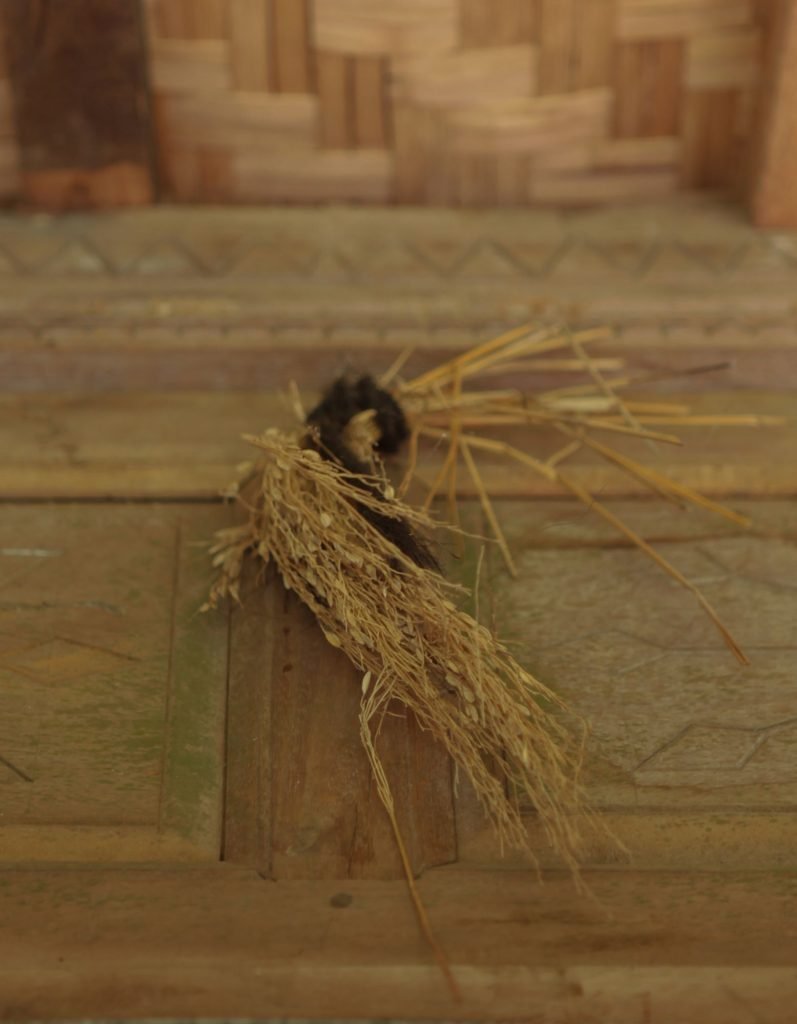
- Tanduk Menjangan (Menjangan Horn)
A repellent ornament that is often found in Javanese homes. The horns used must be an odd number. Menjangan (Javanese deer) in Javanese belief is a symbol of coming of age (adulthood).
- Kuda Lumping (Leathered Horse)
Displayed on the right and left side of the front door of the house, usually with a combination of red and white or red and black.
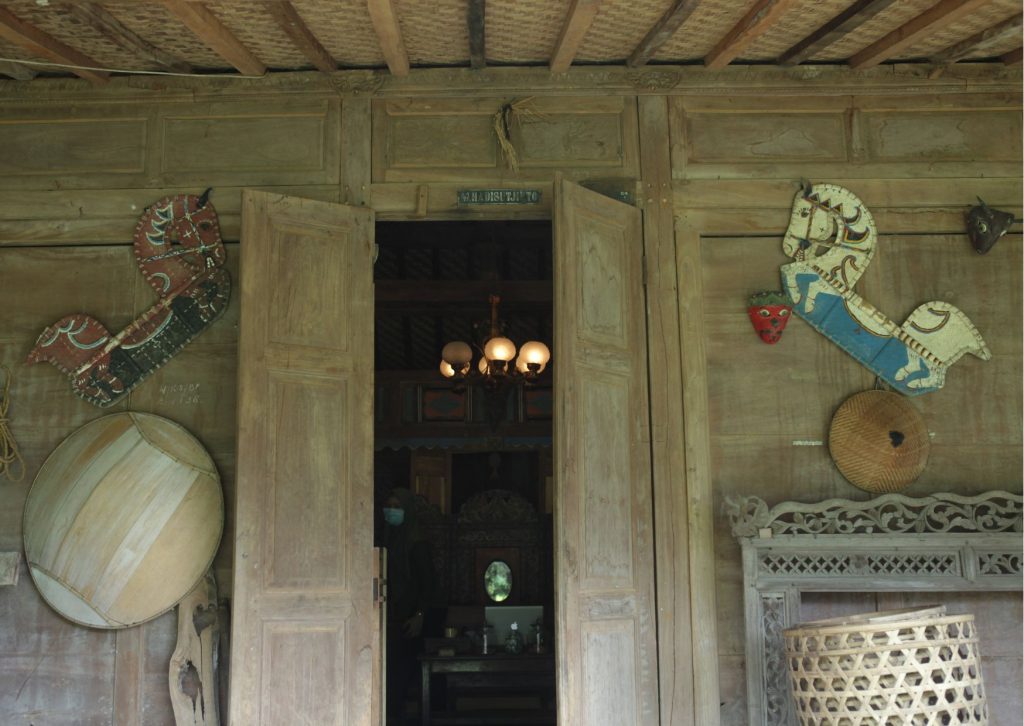
- Cermin Kembar (The Twin Mirror)
Placed on the right and left side of the door in the house.


